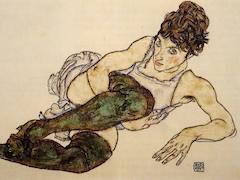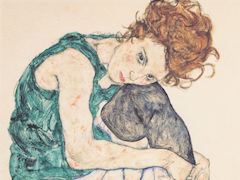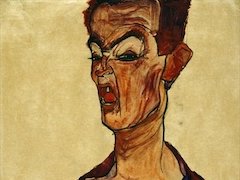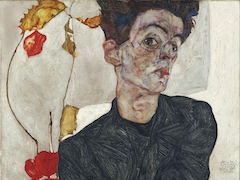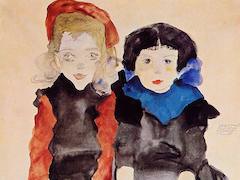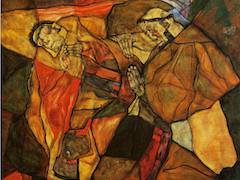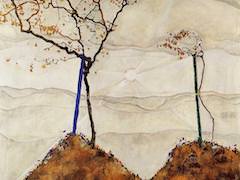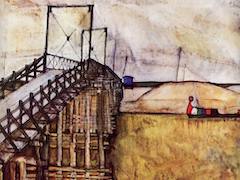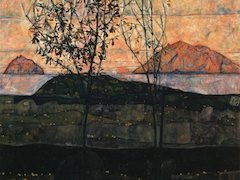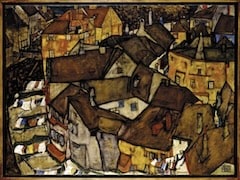The Old City, 1912 by Egon Schiele
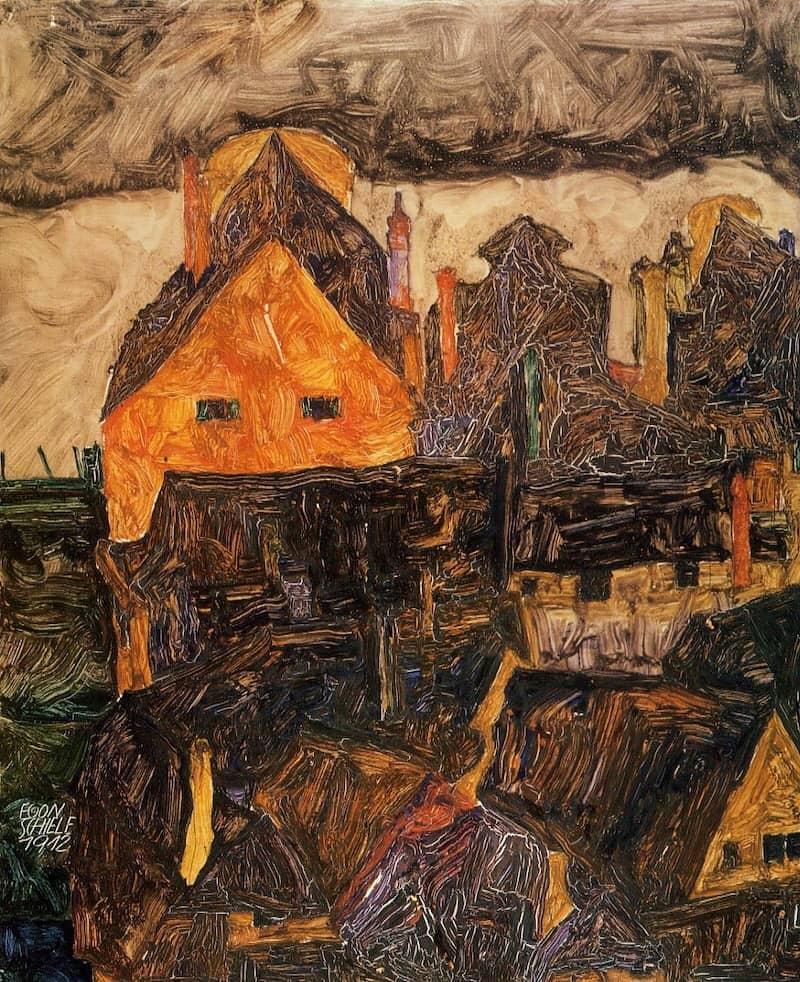
Schiele's favorite landscape subject, by a wide margin, was the town of Krumau, referred to by him most frequently as the "Dead City" (but also as the "Old City" and the "City on the blue River"). Krumaym, his mother's birthplace, was undisputedly an old city, a medieval time capsule whoes winding streets and crumbling buildings embodied for Schiele the eternal interplay of human persistence and decay. Situated around and within a tortuous bend in the Moldau river, Krumau has a compact, island-like configuration that Schiele found compositionally intriguing. He liked especially to perch on the high left bank of the river and draw the old town from above. He told one friend that this bird's-eye perspective influenced all his work, and indeed, even his nudes were often viewed from the vantage point of a tall stool or latter.
Krumau was both spiritually and aesthetically satisfying for Schiele. This was a haunted town - haunted by the many generations (including Schiele's ancestors) who had lived and died within its ancient walls, and haunted specifically by the artist's father, who had once unsuccessfully attempted suicide there and whose ghost supposedly appeared before the artist during a 1910 visit. As depicted by Schiele, Drumau was a barren, unpopulated town, a beautiful reminder of a long-dead past, a shell whose creators and inhabitants had long ago perished.
All his life, Schiele was inspired by what he termed the "Cubistic" quality of certain towns - that is, by their rectilinear geometry - and Krumau was highly qualified in this regard. This was at heart an ersatz Cubism, one in which structures were arranged like building blocks along a child's railroad set or snapped together like the abstract pieces in a jigsaw puzzle. Schiele's vision was fundamentally two-dimensional: distances are foreshortened or flattened, and forms are described by brushwork rather than volumetric modeling. In the Krumau townscapes, walls, streets, river, and sky link together to create an unbroken continuum of shapes. It is a tight, airless network that is in some ways the exact opposite of the wide-open voids of Schiele's figure pieces,. At the same time, the claustrophobia of the Krumau compositions ideally evokes the artist's vision of this doomed yet enchanting little city.

